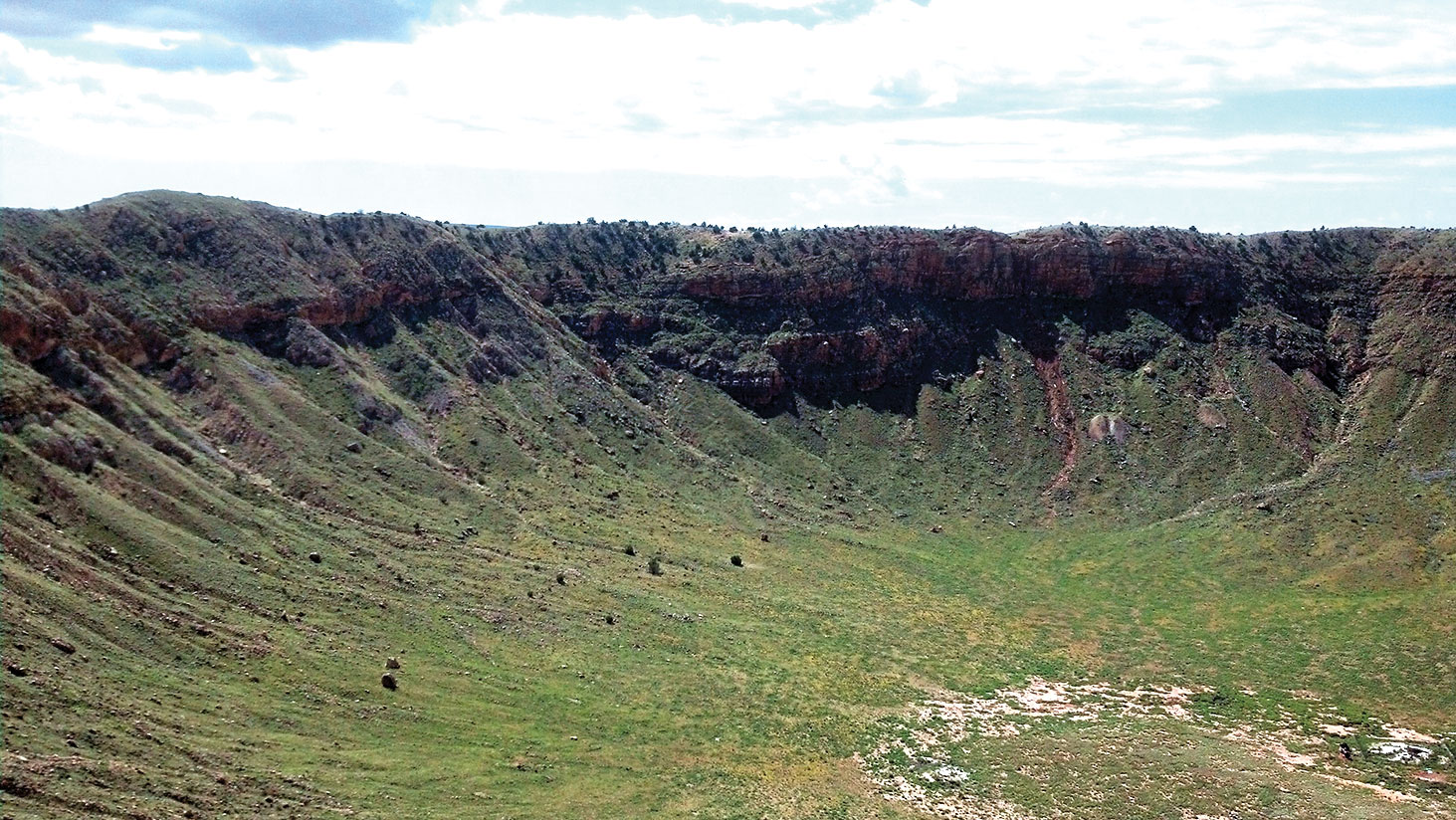
Meteor Crater
Lance Motta-Vilensky
It was during the late Pleistocene Period. Wooly mammoths, bison and giant ground sloths were grazing in the peaceful Pinyon-juniper woodland forest of the Colorado Plateau in northern Arizona. They were having a nice day, blissfully unaware that a 130 foot wide, 300,000 ton meteorite was hurtling towards them at about 30,000 miles per hour. Even though about 50% of the meteorite exploded into small pieces upon entering the earth’s atmosphere, a 65 foot wide chunk slammed into the earth with a force 150 times greater than that of Hiroshima. The resultant fireball and hurricane force winds flattened everything for about 20 miles, killing or wounding animals not vaporized at ground zero. Fast forward to today. You can visit the site of this devastation. About 35 miles east of Flagstaff, just off of I-40, you’ll find Meteor Crater. Almost one mile across, 2.4 miles in circumference and 550 feet deep, it’s considered to be the best preserved and most visited meteor crater in the world, but it’s not just a big hole in the ground. You’ll learn many things at the fascinating Interactive Discovery Center located in the Visitor’s Center, including scientists’ projections of when you can expect the next major meteor event! Plan your visit at meteorcrater.com and have a nice day.
